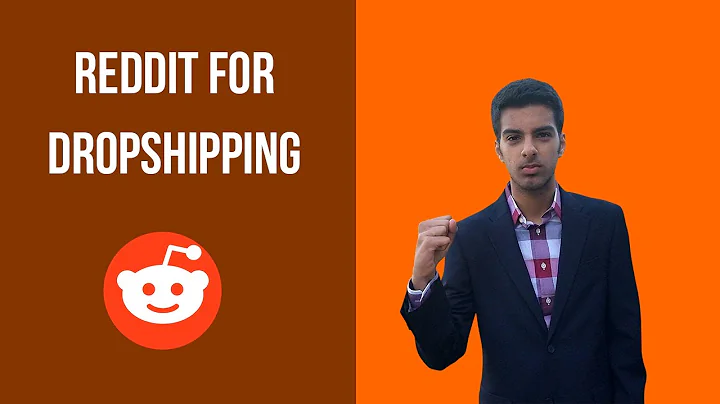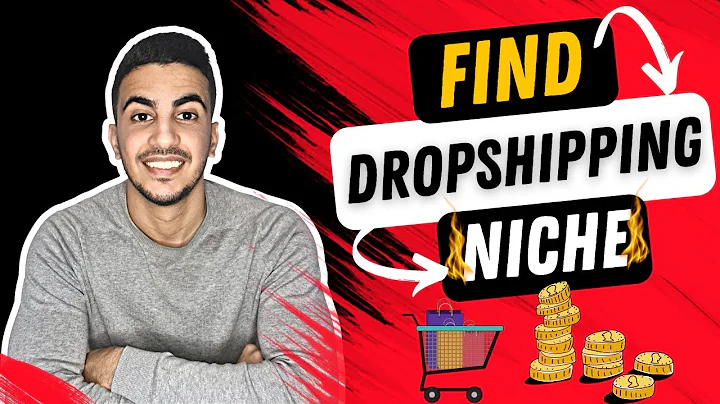Unlocking the Secrets of Drop Shipping
Table of Contents
- Introduction
- Drop Shipping: Alive or Dead?
- Assumptions about Drop Shipping
- Overcoming the Amazon Challenge
- The Power of Impulsive Purchases
- Picking the Right Products
- The Role of Emotion in dropshipping
- The Pricing Dilemma
- Market Saturation: Myth or Reality?
- The Impact of Trump's Policies on Drop Shipping
- Understanding the High Failure Rate
- The Importance of Learning and Experience
Drop Shipping: Alive or Dead?
In the world of e-commerce, drop shipping has been a popular business model for several years. However, there are individuals who claim that drop shipping is dead or dying. In this article, we will address these claims and debunk the misconceptions surrounding drop shipping. We will explore the assumptions made by those who believe drop shipping is no longer viable and provide evidence to the contrary. By the end of this article, you will understand why drop shipping is still a lucrative business opportunity and how you can succeed in the industry.
Introduction
Despite the several successful drop shipping case studies on this channel, there are still individuals who leave comments proclaiming the death of drop shipping. They argue that the increasing ePacket rate is killing drop shipping and that it is too late to start a successful business. However, these claims are based on misguided assumptions that we will debunk in this article.
Drop Shipping: Alive and Thriving
One of the common assumptions made by critics of drop shipping is that people will always prefer to buy from established platforms like Amazon, rather than independent drop shippers. They argue that customers will choose the convenience and speed of Amazon's Prime two-day shipping over the longer delivery times associated with drop shipping from China. While it is true that Amazon is a popular platform, it does not mean that drop shippers cannot compete.
Overcoming the Amazon Challenge
It is undeniable that Amazon is growing exponentially, with product sales increasing year after year. However, this does not mean that Amazon will steal away all our sales. Successful drop shippers understand that not everyone is looking for the quickest delivery or the lowest price. They target customers who are impulsive buyers and are driven by emotions when making purchasing decisions.
The Power of Impulsive Purchases
Drop shipping stores that cater to impulsive buyers have a higher chance of success. These customers are driven by emotions and are more likely to make spontaneous purchases. Successful drop shippers choose products that elicit emotional responses from potential customers. By picking unique, interesting, and emotionally appealing products, drop shippers can create a sense of urgency in customers, making them believe they must buy the product immediately.
Picking the Right Products
The success of a drop shipping store heavily relies on the products it sells. Choosing the right products can make or break a business. Avoiding saturated markets and generic products is crucial. Drop shippers need to identify niche products that have a strong emotional appeal and are not easily found on established platforms like Amazon. These unique products will attract customers who are not solely driven by price and convenience but are looking for something special.
The Pricing Dilemma
Another misconception surrounding drop shipping is that customers will always choose the lowest priced option. However, pricing is subjective, and customers are willing to pay more for products that have a unique value proposition. Drop shippers do not need to compete solely on price; they can offer additional value through emotional appeal, unique designs, or limited availability. Successful drop shipping stores focus on offering products that stand out rather than engaging in price wars.
Market Saturation: Myth or Reality?
Critics argue that drop shipping is dead because the market has become saturated with similar products. However, they fail to understand the difference between market saturation and fulfillment saturation. While some product niches on platforms like AliExpress may be saturated, drop shippers can avoid this issue by choosing unsaturated products. By finding unique products that trigger emotions in customers, drop shippers can carve out a niche for themselves and thrive in the market.
The Impact of Trump's Policies on Drop Shipping
The announcement of the end of ePacket, the affordable shipping option from China to the USA, by Donald Trump caused concern among drop shippers. However, this change did not sound the death knell for drop shipping as anticipated. After negotiations, a new shipping option called AliExpress standard shipping emerged. This option is comparable to ePacket, offering affordable and relatively fast shipping times. Drop shipping is still a viable business model, with alternative shipping options and the availability of fulfillment centers in the USA.
Understanding the High Failure Rate
One of the harsh realities of drop shipping is the high failure rate. While it is true that many drop shippers fail, the reasons for failure are often avoidable. The main reason for failure is a lack of experience and knowledge in marketing and sales. Many aspiring drop shippers expect quick, easy money without putting in the necessary effort to learn and develop their skills. Successful drop shippers understand that marketing and sales are essential components of the business and invest time and money into mastering these areas.
The Importance of Learning and Experience
To succeed in drop shipping, aspiring entrepreneurs need to embrace the learning curve of marketing and sales. Knowledge obtained from books and courses is invaluable, but experiencing the real-world challenges of advertising and attracting customers is irreplaceable. Drop shippers must be willing to invest time and money in understanding consumer behavior, testing advertising campaigns, and making adjustments based on customer interactions. Success in drop shipping requires perseverance, dedication, and a commitment to continuous learning.
Conclusion
Contrary to popular misconceptions, drop shipping is far from dead. It continues to be a viable business opportunity for those willing to invest the time and effort required to succeed. By understanding the nuances of the industry, choosing unique and emotionally appealing products, and honing their marketing and sales skills, drop shippers can build successful and profitable online stores. So, rather than listening to the naysayers, take the leap and discover the incredible potential of drop shipping for yourself.
Highlights
- Drop shipping is not dead but requires understanding the business model and avoiding common misconceptions.
- Amazon's dominance does not mean that drop shippers cannot compete; targeting impulsive buyers and offering unique products is key.
- The emotional appeal of products outweighs the importance of price for many customers.
- Market saturation is a product problem, not a fulfillment problem. Choosing unsaturated products is crucial for success.
- The impact of Trump's policies can be mitigated through alternative shipping options and new fulfillment centers.
- The high failure rate in drop shipping is primarily due to a lack of experience and understanding in marketing and sales.
- Learning and gaining real-world experience are essential for success in drop shipping. Perseverance and continuous learning are crucial for long-term success.



















